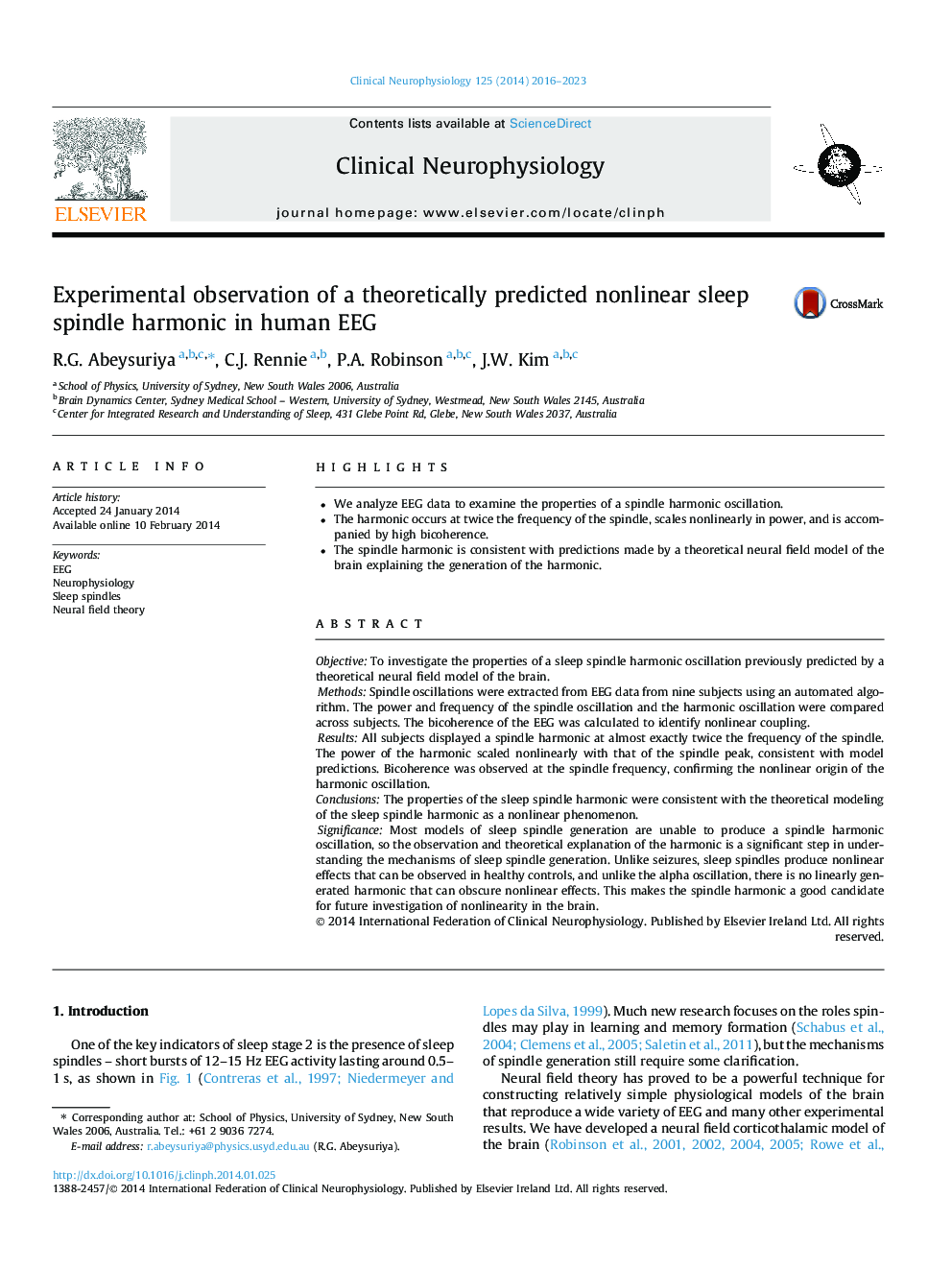| Article ID | Journal | Published Year | Pages | File Type |
|---|---|---|---|---|
| 3042703 | Clinical Neurophysiology | 2016 | 8 Pages |
•We analyze EEG data to examine the properties of a spindle harmonic oscillation.•The harmonic occurs at twice the frequency of the spindle, scales nonlinearly in power, and is accompanied by high bicoherence.•The spindle harmonic is consistent with predictions made by a theoretical neural field model of the brain explaining the generation of the harmonic.
Objective: To investigate the properties of a sleep spindle harmonic oscillation previously predicted by a theoretical neural field model of the brain.Methods: Spindle oscillations were extracted from EEG data from nine subjects using an automated algorithm. The power and frequency of the spindle oscillation and the harmonic oscillation were compared across subjects. The bicoherence of the EEG was calculated to identify nonlinear coupling.Results: All subjects displayed a spindle harmonic at almost exactly twice the frequency of the spindle. The power of the harmonic scaled nonlinearly with that of the spindle peak, consistent with model predictions. Bicoherence was observed at the spindle frequency, confirming the nonlinear origin of the harmonic oscillation.Conclusions: The properties of the sleep spindle harmonic were consistent with the theoretical modeling of the sleep spindle harmonic as a nonlinear phenomenon.Significance: Most models of sleep spindle generation are unable to produce a spindle harmonic oscillation, so the observation and theoretical explanation of the harmonic is a significant step in understanding the mechanisms of sleep spindle generation. Unlike seizures, sleep spindles produce nonlinear effects that can be observed in healthy controls, and unlike the alpha oscillation, there is no linearly generated harmonic that can obscure nonlinear effects. This makes the spindle harmonic a good candidate for future investigation of nonlinearity in the brain.
